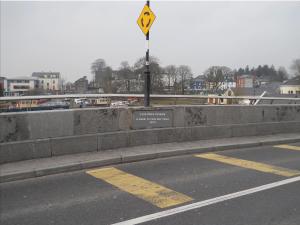 A largely forgotten but inspiring and charitable woman, Margaret Haughery (1813-1882) aka Margaret of New Orleans, was born and raised until she was five in Tully outside Carrigallen, Co. Leitrim. Her charitable work with orphans reminds us of how massive a positive difference even one disadvantaged individual can make in the reality of others.
A largely forgotten but inspiring and charitable woman, Margaret Haughery (1813-1882) aka Margaret of New Orleans, was born and raised until she was five in Tully outside Carrigallen, Co. Leitrim. Her charitable work with orphans reminds us of how massive a positive difference even one disadvantaged individual can make in the reality of others.
Due to heavy rainfall in the period (1816 was known as the year without a summer in Ireland) and other factors her family felt little option but to emigrate to the United States in 1818 as it grew increasingly difficult for them to make a living on their small farm. After four years in Baltimore she lost both her parents in an outbreak of yellow fever in the city. As her sisters and brothers had already moved to other parts of the country she became an orphan. She was taken in by a family and worked as a servant there and gradually made her own way in the world, settling in New Orleans. She married but lost both her husband and only child to ill health and therefore lost her family twice.
Having been one herself she was now so moved by the plight of orphans she went to work in an orphanage in the city. Due to her compassion and discovering she had a natural acumen for business she would soon go on to manage and raise the money necessary to keep it open. To fund her orphanage and other charitable actions she undertook she opened a very successful bakery. By the time she died aged 69 in 1882 she was so well known and beloved that she received a State funeral. She was also the first woman in the United States to have a statue erected in her honour, it can still be seen in New Orleans. A more detailed history of her life and details of her restored home-place in Co. Leitrim can be viewed here. (Stephen Rennicks)










